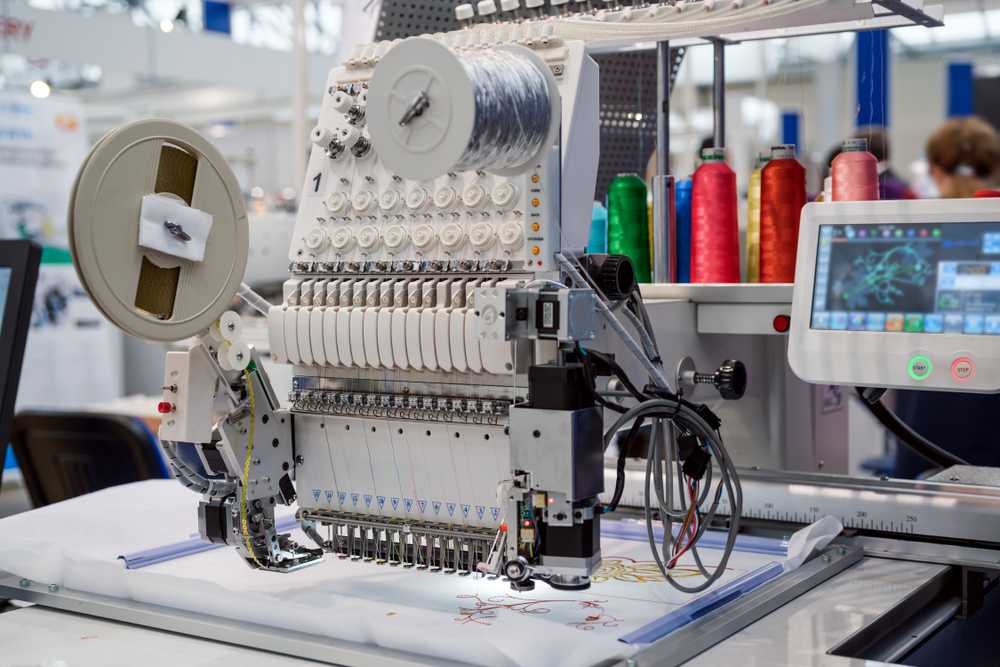Custom Digitizing for Embroidery: Tailored to Your Demands
Custom Digitizing for Embroidery: Tailored to Your Demands
Blog Article
Streamlining the Art of Embroidery Digitizing: Step-by-Step Guide
As innovation proceeds to advance, the digitization procedure has come to be more obtainable, allowing lovers to bring their elaborate layouts to life with simplicity. In this guide, we will unravel the complexities of needlework digitizing, breaking down each action systematically to enhance the procedure and empower both beginners and seasoned embroiderers alike.
Recognizing Needlework Digitizing Software Application
Embroidery digitizing software program functions as an important device for changing detailed layouts into digital layouts suitable with embroidery equipments, assisting in accurate stitching and personalization. This customized software enables users to import numerous image data formats, such as JPG or PNG, and convert them right into embroidery machine-readable styles like DST, EXP, or PES - Digitizing for Embroidery. By using functions like stitch editing and enhancing, padding options, and string color selection, digitizing software application enables customers to control every aspect of the layout process
Furthermore, progressed embroidery digitizing software provides tools for producing intricate styles, changing stitch thickness, and incorporating intricate information. Individuals can also sneak peek the design prior to stitching it out, making sure precision and reducing mistakes. In addition, several software application programs supply automatic functions that help improve the digitizing process, conserving time and initiative.
Understanding the abilities of embroidery digitizing software application is crucial for attaining premium outcomes in embroidery tasks. By mastering this device, embroidery lovers and professionals can unleash their creative thinking and bring elaborate layouts to life with precision and efficiency.

Selecting the Right Design File
After acquainting yourself with the abilities of embroidery digitizing software application, the following essential action in the process is choosing the best design declare your task. Digitizing for Embroidery. When picking a layout declare needlework digitizing, it's important to think about the intricacy of the layout, the dimension of the end product, and the sort of material you will be collaborating with
For complex designs with great information, a high-resolution image or vector data is suggested to guarantee that the needlework maker can properly replicate the layout. Additionally, the size of the last item plays a significant duty in selecting the ideal layout file. Bigger layouts might need higher resolution data to keep clarity and sharpness.
Additionally, the kind of textile you will be embroidering on influences the choice of layout documents. Different materials may call for adjustments in the layout documents to ensure that the stitches are appropriately lined up and the style appears as meant. By carefully selecting the appropriate style file based upon these factors, you can establish yourself up for an effective embroidery digitizing process.
Digitizing Devices and Techniques
Utilizing specialized software program and precision techniques, digitizing tools are crucial in changing elaborate styles into embroidery-ready files. Embroidery digitizing software application, such as Full Report Wilcom, Hatch, or Embrilliance, supplies the needed platform to transform artwork into stitch information. These programs offer features like stitch editing and enhancing, rug alternatives, and lettering devices to make certain the design converts seamlessly onto textile.
One of the vital techniques in digitizing is creating a clear course for the embroidery machine to adhere to. This entails digitizing each aspect of the layout with accuracy, identifying stitch kinds, thickness, and instructions. By making use of devices like digitizing tablet computers or software-specific plugins, embroiderers can accomplish a high level of accuracy in their digitized styles.
Moreover, grasping the art of padding sewing is critical for creating top quality needlework. Underlay stitching supports the fabric and creates a structure for the style, making certain that the last product is both aesthetically appealing and lasting. By comprehending these digitizing devices and methods, embroiderers can elevate their craft and bring intricate designs to life with precision and performance.
Personalizing Stitch Kinds and Instructions
Having developed a foundation in digitizing tools and methods, a critical element ahead of time needlework craftsmanship depends on personalizing stitch kinds and instructions with precision and objective. The option of stitch kinds can substantially affect the overall appearance and appearance of the stitched design. Satin stitches, known for their smooth and shiny coating, work well for producing boundaries and message. On the other hand, fill stitches are perfect for covering bigger locations effectively. By purposefully incorporating these stitch types, embroiderers can achieve deepness and measurement in their designs.
Additionally, the instructions of stitches plays an important duty in enhancing informative post the aesthetic allure of the last needlework. By experimenting with different stitch angles and patterns, embroiderers can bring their layouts to life with exceptional detail and complexity.
Testing and Refining Your Digitized Design
To make certain the accuracy and top quality of your digitized layout, complete screening and refinement are vital steps in the embroidery digitizing procedure. When you have actually finished the digitization of your style, it is crucial to examine it before continuing with the real embroidery. Checking enables you to determine any type of prospective concerns such as thread breaks, stitch density problems, or style distortions that might impact the last outcome.

After testing, it is essential to improve your digitized style based on the feedback from the examination sew-out. This may entail tweaking find out stitch setups, adjusting thickness, or making adjustments to the overall layout to accomplish the wanted end result. By repeating through screening and improvement, you can fine-tune your digitized style to excellence prior to moving on with the real embroidery process.
Conclusion
Finally, grasping the art of embroidery digitizing needs an extensive understanding of the software program, selecting the best style data, making use of digitizing devices and strategies, customizing stitch kinds and directions, and screening and fine-tuning the digitized style. By complying with these steps, embroiderers can simplify the digitizing process and produce high-quality embroidered designs with precision and efficiency.
Report this page